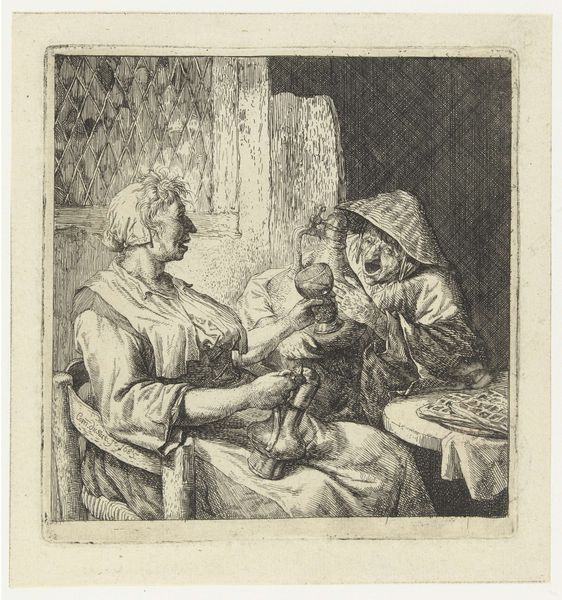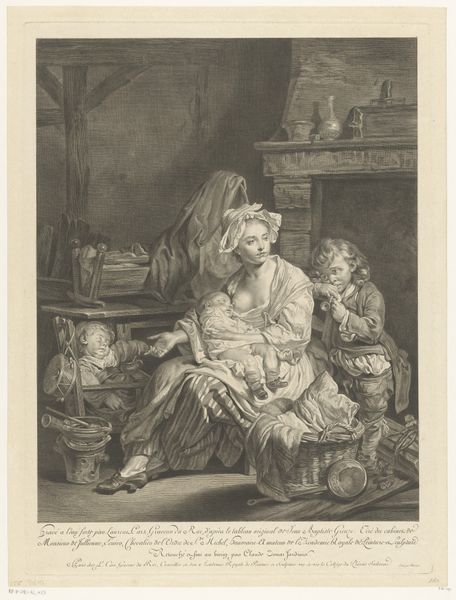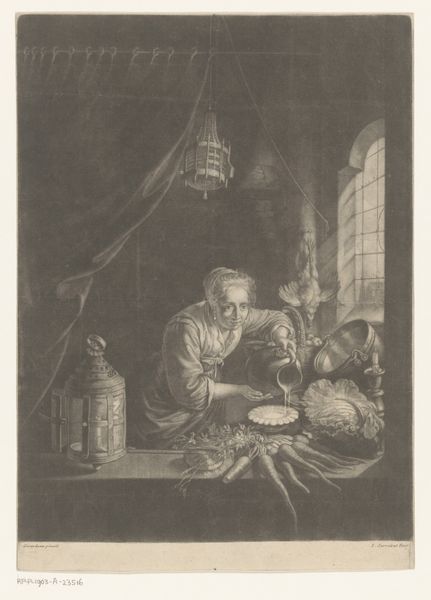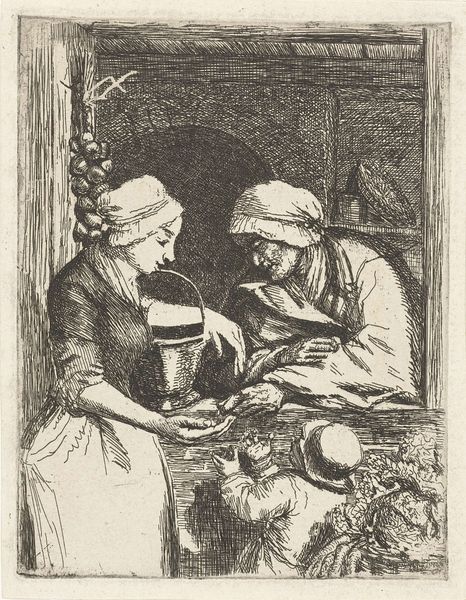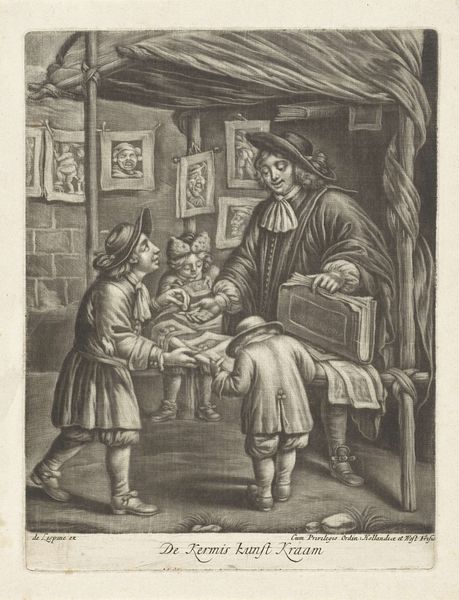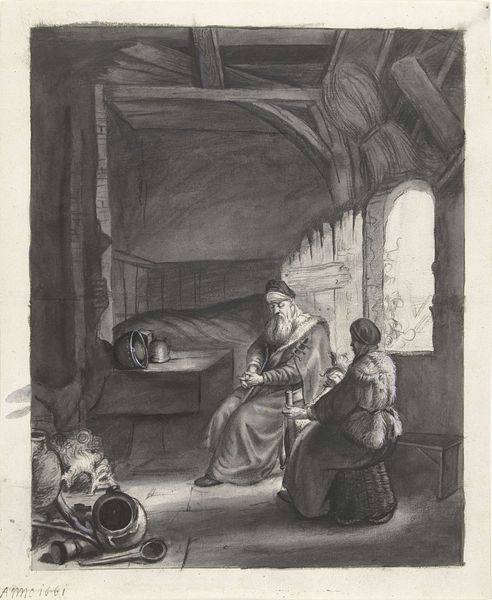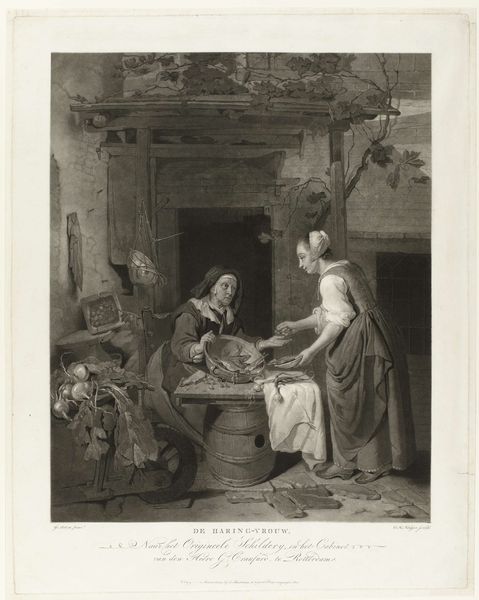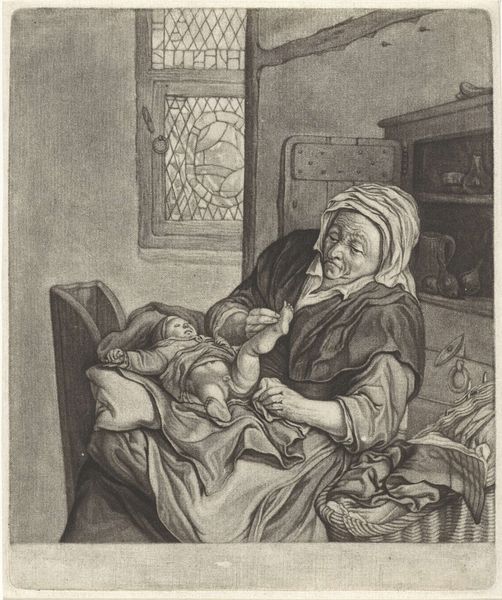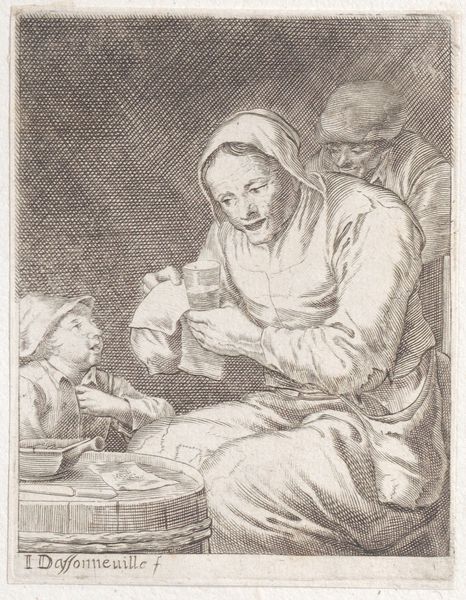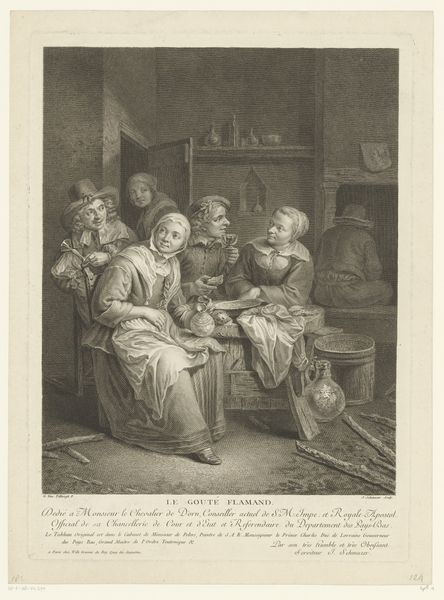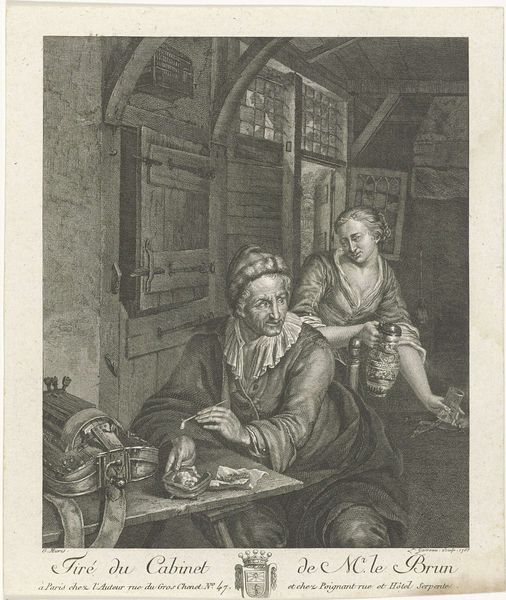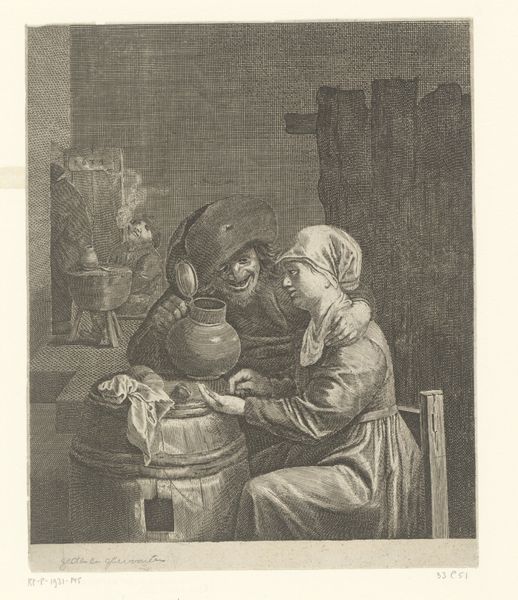
print, etching
# print
#
etching
#
figuration
#
genre-painting
#
realism
Dimensions: 364 mm (height) x 273 mm (width) (bladmaal)
Curator: "Drengen stjæler æbler fra den sovende kone," or "The Boy Stealing Apples from the Sleeping Wife," an etching by Erling Eckersberg, dating from 1808 to 1889. It's currently housed here at the SMK. What's your first impression? Editor: I am immediately struck by the intimate narrative the piece conveys, and how ordinary it looks. It’s almost like witnessing a mundane secret, heavy with underlying implications. Curator: It’s interesting you say "mundane." Look at the medium: printmaking. The means of production are directly tied to the circulation of such narratives among the growing middle class. Genre painting, like this one, spoke directly to their values and aspirations. How do you feel about that observation? Editor: That resonates with me because the apple is a powerful symbol. In Western art it suggests everything from temptation to original sin. The image shows a transgression – but of course, in a humorous, "folksy" way. The scene unfolds indoors, an implicit moral realm which gives the fruit even greater symbolic importance. Curator: Exactly. And the fact that it’s a boy "stealing" suggests childhood mischief but also reflects contemporary attitudes towards labor, property and social mobility. Do you see the boy reaching for more than his fair share? This points to how economic relations were understood then, through visual parables of everyday life and labor. What are your thoughts about the boy in this setting? Editor: The way the boy steals those apples does evoke something almost innocent because it lacks malevolence. It’s fascinating how an artwork can both reinforce social structures and at the same time challenge or subvert expectations depending on the context. It might be critiquing expectations even when appearing to reinforce them. Curator: It all comes back to how these prints were consumed. How might owning a print like this influenced the bourgeois understanding of themselves as landowners and household heads, perhaps also how parents regarded children and their potential for both disruption and economic value. Editor: Considering those dynamics enriches our reading of the scene, as if it is charged with latent anxieties regarding values and morality. I appreciate your angle so much! Curator: And I see further depths because of your analysis of the symbol. Editor: Thanks.
Comments
No comments
Be the first to comment and join the conversation on the ultimate creative platform.
